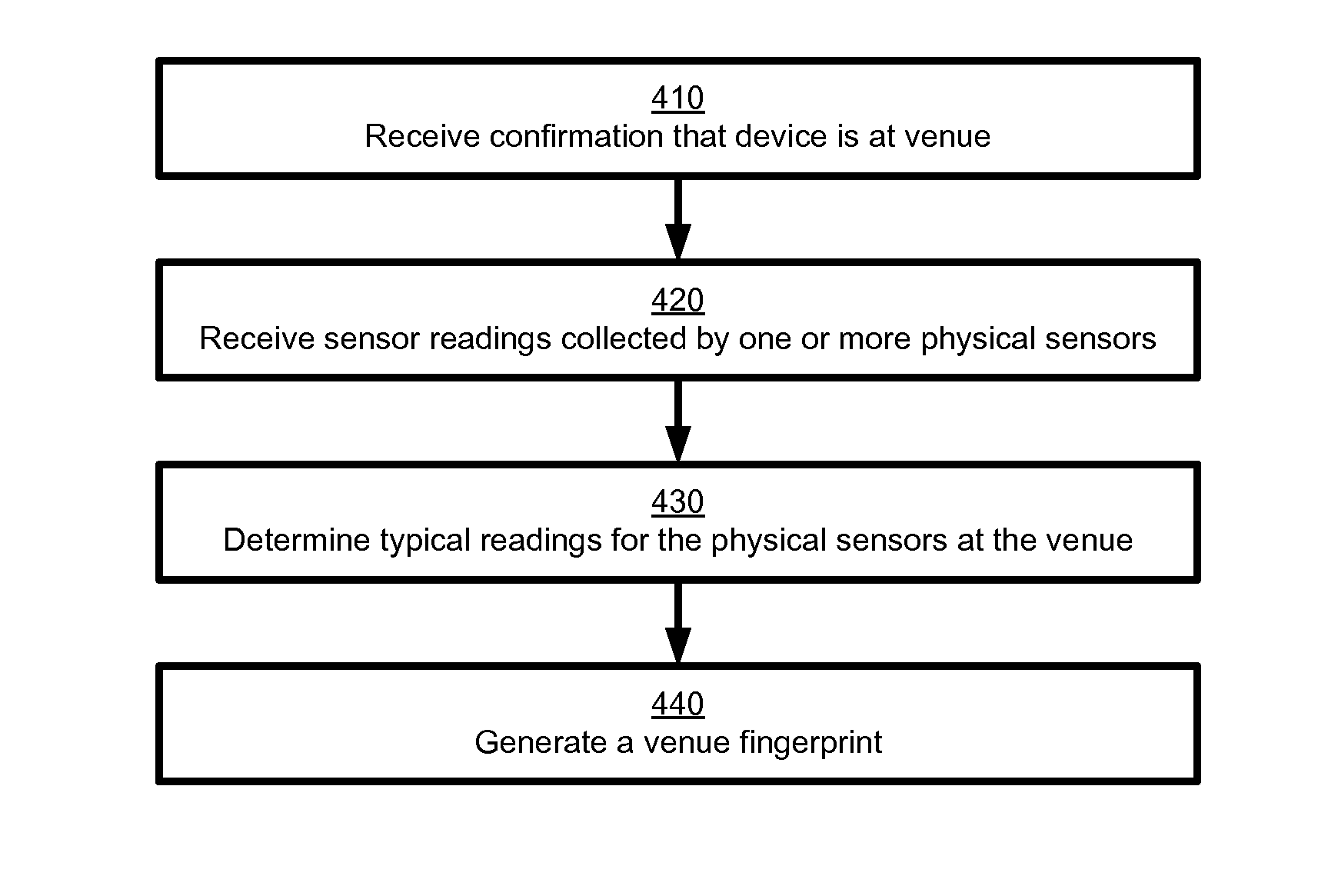Venue Identification Using Sensor Fingerprints
a technology of sensor fingerprints and venues, applied in the field of venue identification using sensor fingerprints, can solve the problems of inability to distinguish between the two, the difference in the position of neighboring venues is too small for typical positioning sensors to unambiguously distinguish, and the device's sensor may be functionally incapable of distinguishing between the two
- Summary
- Abstract
- Description
- Claims
- Application Information
AI Technical Summary
Benefits of technology
Problems solved by technology
Method used
Image
Examples
example sensors
[0027]FIG. 2 illustrates the mobile sensors 110 included in one embodiment of a user device 100. In the embodiment shown, the mobile sensors 110 include a location sensor 111 and physical sensors 120 including a camera 122, a microphone 123, an accelerometer 124, a thermometer 125, and a barometer 126. In other embodiments, different and / or additional mobile sensors 110 are included a part of the user device 100.
[0028]The location sensor 111 determines the geo-spatial location of the user device 100 using one or more techniques, including GPS tracking, WiFi location, cell-tower triangulation, and the like.
[0029]The camera 122 collects images (and / or video), which may be analyzed to determine environmental data such as an average light intensity level and / or an average spectral profile of the images. In one embodiment, a light of the mobile device 100 emits light with known properties at the time the camera 122 collects sensor readings. For example, the light may emit one or more kno...
PUM
 Login to View More
Login to View More Abstract
Description
Claims
Application Information
 Login to View More
Login to View More - R&D
- Intellectual Property
- Life Sciences
- Materials
- Tech Scout
- Unparalleled Data Quality
- Higher Quality Content
- 60% Fewer Hallucinations
Browse by: Latest US Patents, China's latest patents, Technical Efficacy Thesaurus, Application Domain, Technology Topic, Popular Technical Reports.
© 2025 PatSnap. All rights reserved.Legal|Privacy policy|Modern Slavery Act Transparency Statement|Sitemap|About US| Contact US: help@patsnap.com



